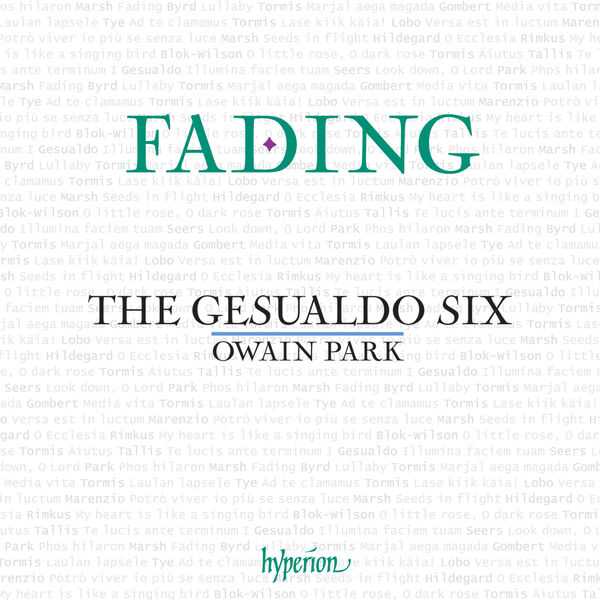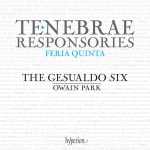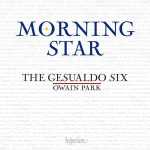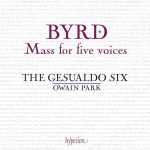

Composer: Hildegard von Bingen, Gerda Blok-Wilson, William Byrd, Carlo Gesualdo, Nicolas Gombert, Alonso Lobo, Luca Marenzio, Joanna Marsh, Owain Park, Sarah Rimkus, Jonathan Seers, Thomas Tallis, Veljo Tormis, Christopher Tye
Performer: The Gesualdo Six
Conductor: Owain Park
Format: FLAC (tracks)
Label: Hyperion
Catalogue: CDA68285
Release: 2020
Size: 2.47 GB
Recovery: +3%
Scan: yes
01. Tallis: Te lucis ante terminum I
02. Gesualdo: Illumina faciem tuam
03. Seers: Look down, O Lord
04. Park: Phos hilaron
Marsh: Arabesques
05. III. Fading
06. Byrd: Lullaby, my sweet little baby
Tormis: 4 Estonian lullabies
07. II. Marjal aega magada ‘It’s time for the little berry to sleep’
08. Gombert: Media vita in morte sumus 6vv
Tormis: 4 Estonian lullabies
09. I. Laulan lapsele ‘I sing for my child’
10. Tye: Ad Te clamamus
Tormis: 4 Estonian lullabies
11. III. Lase kiik käia! ‘Let the cradle swing!’
12. Lobo: Versa est in luctum
13. Marenzio: Potrò viver io più se senza luce
Marsh: Arabesques
14. IV. Seeds in flight
15. Hildegard: O Ecclesia
16. Rimkus: My heart is like a singing bird
17. Blok-Wilson: O little rose, O dark rose
Tormis: 4 Estonian lullabies
18. IV. Äiutus ‘Lulling’
From the twelfth century (Saint Hildegard) to the twenty-first, the voices of The Gesualdo Six weave a meditative reflection around the ancient Office of Compline in a moving sequence of music from fourteen composers.
The Gesualdo Six (actually there are seven of them including director Owain Park, who sings bass as well as directing) are among the UK’s hot vocal groups. Fading, their third album, is inspired by the day’s-end Compline service, and it may make a good place to begin with the group’s remarkable work. Their atmospheric, sensuous sound fits the strongly spiritual quality of many of the lyrics, and they have a consistency of approach strong enough to tie together some rather diverse material. For the most part, Park alternates Renaissance works with contemporary pieces. There are subdivisions within each category, though, and this is what gives the program its peculiarly powerful variety. On the Renaissance side, there are English pieces and Continental works of the 16th century that venture into more chromatic territory. The one by the group’s namesake is the least chromatic of these (Gesualdo’s sacred music, for the most part, was a good deal less experimental than his madrigals), but pieces like Gombert’s Media vita dovetail nicely with the little-known chromatic folk song settings of composer Veljo Tormis. In all, a highly original program, beautifully executed, and well recorded at St. George’s Church, Chesterton, Cambridge.



